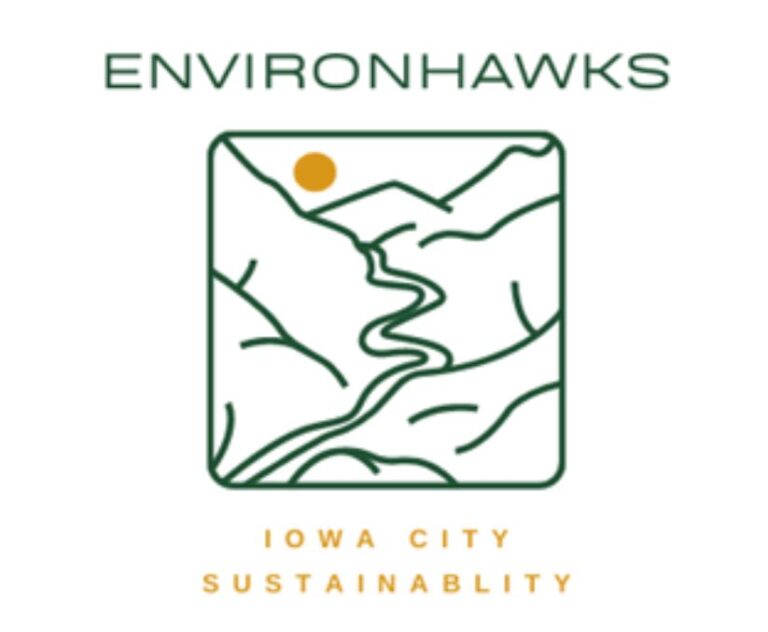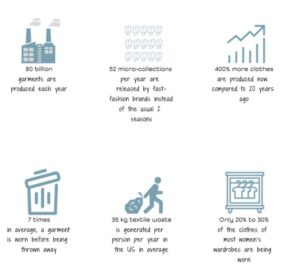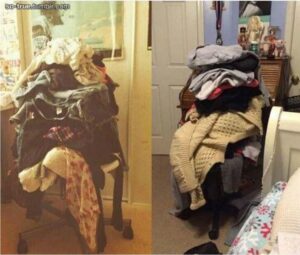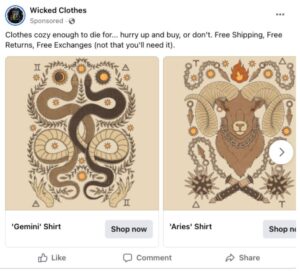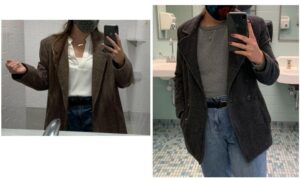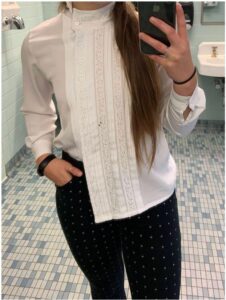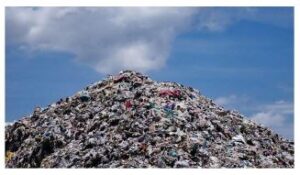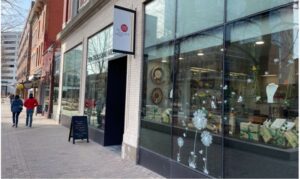
Ever since moving to Iowa City, I have had a fascination with a little shop downtown filled with beautiful handmade crafts, housewares, and jewelry that touted an impressive fair trade brand. Ten Thousand Villages has since remained a staple for me when looking for gifts for loved ones or just looking to treat myself! The concept of paying fair prices to international artisans for their handmade goods seemed simultaneously so simple and straightforward yet too good to be true. So when Ten Thousand Villages came up as a potential idea for an article, I was eager to speak to the executive director, Liz Preciado Genell, about the business and how they are doing their part to make Iowa City a greener place. Below are just a few of the highlights of my conversation with Liz. Be sure to check out Ten Thousand Villages in the ped mall located at 105 S Dubuque st in Iowa City!
Do you mind telling me a little bit about the business model itself and how the fair trade aspect works?
Yeah, so Ten Thousand Villages is celebrating 75 years. The company was founded by a woman named Edna Ruth Byler. She had just come out of the depression, saw what poverty did to the community. And when she was traveling to Puerto Rico with her husband, they were Mennonites, she met all these women who were doing this beautiful needlecraft work, but they were living in rural areas, and living in poverty. She had the idea to take their goods to the American marketplace, sell it for what it’s worth, then turn that money back over to these women, and help build their economy in their villages. So that’s what she started doing. And she just sold things out of the trunk of her car for a very long time. But what she was doing, people started noticing and the Mennonite church decided, we’d like to back you in this because it’s a really great humanitarian effort. And she started traveling to more places doing the same thing that she was doing with these women in Puerto Rico. So then Ten Thousand Villages became a business in the 90s. Our location in Iowa City originally started out as a pop-up in a thrift store crowded closet. We got our brick and mortar store about five years ago. There are Ten Thousand Villages stores all over the US, they were one of the founding members of the World Fairtrade organizations. So that’s just a little bit about the background of Ten Thousand Villages. And what they do is they partner with different artists and groups in developing countries, and bring their goods to our marketplace. And then we turn around and give the money back for more orders. So they dictate how much money they need. And what our partnership allows them to do is to be able to pay their artisans fair wages, and give them safe working conditions, and stability of employment. So that their artisan families can plan for the future. And they know how much money is going to be coming in every month, things that we take for granted here.
Fair trade is so often an overlooked aspect of sustainability, so it’s good to see it practiced here with such enthusiasm, are there other ways beyond fair trade that Ten Thousand Villages is practicing sustainability?
Yeah, definitely, the company as a whole really encourages the reuse of materials that would otherwise go to the landfill. So they recycle things like sari material, so instead of going to the landfill, they make blankets, table runners, napkins out of them, and weave them into baskets. There’s one artisan group that is near a candy factory that reuses the candy wrappers for birdhouses. You’ll see a lot of things made from bike parts since that is such a big mode of transportation in India. Tagua nut is another sustainable solution to ivory; tagua nuts have a very similar feel and look to ivory. It’s harvested after it falls off the tree so it doesn’t hurt the trees to harvest them. A lot of the packaging you’ll see is sustainable like handmade paper and wax paper, they don’t use a lot of plastic. The few plastic packing pillows that we get, we just bag up, and we give to mailboxes, etc, so that they can reuse them. And then, as far as our store just individually, we really try to practice using safe cleaning. We use vinegar and water to clean and we have a Swiffer that we use reusable cotton pads on, so we really do try to walk the walk here.
On a personal note, what does sustainability mean to you? And why was it important that you go into a business surrounding that concept?
I used to work in other retail boutiques where I saw a lot of waste and I was always thinking “we can do better than this”. Actually, I used to work at Revival boutique, and the owner, Sheila Davison, and I started contacting the companies asking for less packaging and to stop having the clothes be sent out on hangers that we weren’t going to use. Half that store is secondhand clothing, but the new clothing came from small companies that are local and that only produce as much as they’re selling rather than overproducing. That’s where my interest really grew was from working there. Of course, my own concern for the environment was a big factor too. I got out of retail for a long time, because I was concerned with how it was affecting the environment. And then when I was approached to manage here, I did a lot of research and felt like, “Okay, this is an organization that I can get behind and feel good about”.
Yeah, I don’t think most people realized the kind of waste that goes into a typical retail model. What would you say is one of your proudest moments or accomplishments as someone who runs a business in Iowa City?
I think just really making the conscious choice to put my ability and my energy towards a company that’s actually practicing sustainability. Yeah, so like I said, I knew I couldn’t continue to back this kind of model for retail. So I would just encourage people to back it up with your actions and where you choose to work and what you choose to put your money towards if sustainability is something that’s important to you.
On the flip side of that, what are some of the biggest challenges you have faced trying to run a sustainable business?
I think just gaining people’s trust and communicating that we really are what we say we are. Because unfortunately, “sustainability” and “green” have become kinds of buzzwords and I think there are people taking advantage of that. People are starting to become distrustful about greenwashing so I just really try to educate people, and let them know that there’s transparency there. They can go and do the research for themselves to look more closely at companies.
This post wouldn’t be complete without a special Thanks to Liz for taking the time to walk me through the business and give thoughtful answers to all my questions! Thanks again Liz!
Check out our audio podcast version of this article below!
